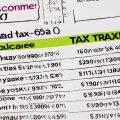Welcome to our complete guide on Council Tax Band E! If you’ve recently moved into a new property or are considering purchasing one, understanding the council tax bands and costs associated with them is essential. Council Tax Band E is one of the higher bands, and knowing what to expect in terms of payments and how it is calculated can help you manage your finances effectively. In this article, we will walk you through everything you need to know about Council Tax Band E, including the cost, how it is calculated, and useful tools like the tax band calculator and local authority bands. So, let’s dive right in and explore the ins and outs of Council Tax Band E!
What is Council Tax Band E?
Council Tax Band E is one of the eight council tax bands (A-H) used in England and Wales to determine the amount of council tax payable on a domestic property. It is an important part of the council tax system, as it helps local authorities set the appropriate tax rates for properties within their jurisdiction.
1. Council Tax Bands in England
In England, the Council Tax Band E covers properties valued between £88,001 and £120,000 as of 1 April 1991. This means that if your property’s value falls within this range, it will be classified as a Band E property for council tax purposes.
2. Council Tax Bands in Wales
The council tax bands in Wales are slightly different from those in England. In Wales, the Council Tax Band E covers properties valued between £123,001 and £162,000 as of 1 April 2003. This valuation range is higher than the one used in England, reflecting the differences in property values between the two countries.
Regardless of whether you live in England or Wales, understanding the council tax bands and where your property falls within them is crucial for determining your council tax liability. This information can also be helpful if you ever decide to challenge your council tax band, which will be covered in a later section of this article.

Council Tax Band E – Key Facts
When it comes to council tax in the United Kingdom, understanding the key facts about the different bands is crucial. Band E, in particular, holds significant importance as it falls within the middle range of council tax bands. Let’s explore the details surrounding this band and how it compares to the other bands.
1. Property Value Range for Band E in England
In England, the property value range for council tax Band E is £88,001 to £120,000, based on property values as of 1 April 1991. This means that if your property’s value falls within this range, it will be categorised as a Band E property for council tax purposes.
2. How Band E Compares to Other Bands?
Council tax bands in England and Wales are divided into eight categories, ranging from Band A (the lowest) to Band H (the highest). Band E is the fifth highest band, with the following property value ranges:
- Band A: £0 – £40,000
- Band B: £40,001 – £52,000
- Band C: £52,001 – £68,000
- Band D: £68,001 – £88,000
- Band E: £88,001 – £120,000
- Band F: £120,001 – £160,000
- Band G: £160,001 – £320,000
- Band H: £320,001 and above
The council tax payable for a Band E property is higher than the lower bands, but lower than the higher bands. This positioning within the council tax band hierarchy means that Band E properties are considered to be in the middle range in terms of property value and the corresponding council tax liability.
| Council Tax Band | Property Value Range (England) | Property Value Range (Wales) | Council Tax Cost Comparison |
|---|---|---|---|
| Band A | £0 – £40,000 | £0 – £44,000 | Lowest |
| Band B | £40,001 – £52,000 | £44,001 – £65,000 | Lower than Band E |
| Band C | £52,001 – £68,000 | £65,001 – £91,000 | Lower than Band E |
| Band D | £68,001 – £88,000 | £91,001 – £123,000 | Lower than Band E |
| Band E | £88,001 – £120,000 | £123,001 – £162,000 | Higher than Bands A-D, lower than Bands F-H |
| Band F | £120,001 – £160,000 | £162,001 – £223,000 | Higher than Band E |
| Band G | £160,001 – £320,000 | £223,001 – £324,000 | Higher than Band E |
| Band H | £320,001 and above | £324,001 and above | Highest |
This comprehensive overview of council tax Band E, including the property value range and its position within the overall council tax band structure, provides valuable insights for homeowners and residents in the United Kingdom.

Changes Affecting Council Tax Bands
The council tax band of a property can undergo changes due to various factors, such as alterations or extensions made to the structure. If a homeowner expands their residence through an extension or structural modifications, it may result in the property being assigned a higher council tax band when it is next purchased.
1. Alterations and Extensions
The Valuation Office Agency (VOA) is responsible for assessing properties and allocating the correct council tax band. This assessment may involve a physical visit to the property to gather relevant information. If a homeowner makes significant changes to the size or layout of their home, such as adding an extension, the VOA may reclassify the property to a higher council tax band.
The council tax band changes, council tax band alterations, and council tax band extensions can have a notable impact on a homeowner’s annual tax liability. It is essential for property owners to be aware of these potential changes and to understand the process of challenging their council tax band if they believe it has been incorrectly assigned.

- Structural changes to a property, such as extensions or conversions, can lead to a higher council tax band.
- The Valuation Office Agency (VOA) is responsible for assessing properties and allocating the correct council tax band.
- Homeowners should be aware of the potential for council tax band changes, council tax band alterations, and council tax band extensions and understand the process of challenging their band if necessary.
Challenging Your Council Tax Band
If you believe your property has been placed in the wrong council tax band, you have the right to challenge the decision. There are several acceptable reasons for challenging your council tax band, and the process can be straightforward if you understand the necessary steps.
1. Reasons to Challenge Your Band
The most common reasons to challenge your council tax band include:
- Changes to your property, such as demolition, conversion into flats, or significant renovations
- Inaccurate property details in the Valuation Office Agency’s records
- Mistakes in the original valuation of your property
- Significant changes in the property market value since your band was last assigned
By reviewing the banding of similar properties in your area and researching the historical value of your own property, you can determine if your council tax band is accurate or if a council tax band challenge is warranted.
2. How to Challenge Your Council Tax Band?
To initiate a council tax band appeal, you should first contact the Valuation Office Agency or your local council. They will typically review the details of your property and may request additional information from you. If they agree that your property has been placed in the wrong band, they will adjust your council tax accordingly.
The process of challenging your council tax band can take several weeks or months, so it’s important to be patient and persistent. If you’re not satisfied with the outcome, you have the option to escalate your case to a valuation tribunal for further review.
| Key Steps to Challenge Your Council Tax Band |
|---|
| 1. Research similar properties in your area to determine if your band is accurate |
| 2. Gather evidence to support your case, such as property details, market values, and any changes to your home |
| 3. Contact the Valuation Office Agency or your local council to initiate the council tax band challenge process |
| 4. Be prepared to provide additional information or documentation as requested |
| 5. If unsatisfied with the outcome, escalate your case to a valuation tribunal for further review |
By understanding the reasons and the process for challenging your council tax band, you can ensure that you’re paying the correct amount and potentially save money on your annual council tax bill.

Council Tax Discounts and Exemptions
The council tax system in the United Kingdom offers a range of discounts and exemptions to help people in various circumstances. These provisions can significantly reduce the financial burden of council tax payments. Understanding the eligibility criteria for council tax discounts and exemptions is crucial for ensuring you receive the support you’re entitled to.
1. Council Tax Discounts
Council tax discounts are reductions in the amount of council tax you’re required to pay. These discounts are typically based on factors such as your residency status, living arrangements, and personal circumstances. Some common examples of council tax discounts include:
- Single-person discounts: Individuals living alone may be eligible for a 25% discount on their council tax bill.
- Student discounts: Full-time students are exempt from paying council tax altogether.
- Disability discounts: Households with a person who has a severe mental impairment or requires care due to a disability may qualify for a discount.
2. Council Tax Exemptions
Council tax exemptions mean that no council tax is payable at all. Certain individuals and properties are eligible for complete exemptions, including:
- Armed forces personnel living in armed forces accommodation.
- Residents of care homes or hospitals.
- Unoccupied properties that are undergoing structural alterations or are unfurnished.
Applying for these council tax discounts and exemptions can significantly reduce the financial burden on individuals and households. It’s essential to review your eligibility and submit the necessary applications to ensure you receive the support you’re entitled to.
Paying Your Council Tax Bill
Once your council tax band has been determined, you will receive a council tax bill from your local authority. This bill will outline the total amount of paying council tax you are required to pay, as well as the individual elements that make up the overall council tax bill, such as charges for police and fire services.
Council tax can typically be paid in council tax instalments, either monthly, fortnightly, or annually. There are various council tax payment methods available, including direct debit, online, by phone, or at the local council office. It is important to pay your council tax bill on time to avoid late payment fees or other penalties.
Council Tax Payment Methods
Paying your council tax bill can be done through a variety of methods:
- Direct Debit: This is the most convenient option, as the council will automatically deduct the payments from your bank account on a set date each month or year.
- Online: Most councils offer the ability to pay your council tax bill securely through their website using a debit or credit card.
- By Phone: You can call your local council and make a payment over the phone using a debit or credit card.
- In Person: Some councils allow you to make paying council tax payments at their local office, either by cash, cheque, or card.
| Payment Method | Convenience | Security | Flexibility |
|---|---|---|---|
| Direct Debit | High | High | Low |
| Online | High | High | High |
| Phone | Medium | High | Medium |
| In Person | Low | Medium | Medium |
Conclusion
In conclusion, this article has provided a comprehensive understanding of Council Tax Band E in the UK. Key points covered include the property value range for Band E, how it compares to other council tax bands, factors that can affect a property’s band, the process for challenging a council tax band, and the availability of discounts and exemptions. By familiarising themselves with the council tax system and their rights as taxpayers, individuals can ensure they are paying the correct amount of council tax and taking advantage of any available support or reductions.
The article has explored the various council tax bands in England and Wales, highlighting the specific details of Band E. Homeowners can now better gauge where their property falls within the council tax structure and make informed decisions regarding their tax obligations. Additionally, the information on challenging a council tax band and accessing discounts or exemptions empowers individuals to actively manage their council tax payments.
Overall, this comprehensive guide on council tax band e summary and council tax band e key points equips readers with the knowledge and resources necessary to navigate the council tax landscape effectively. By understanding the nuances of the system, homeowners can ensure they are paying the right amount and exploring all available options to minimise their council tax burden.
FAQ
1. What is Council Tax Band E?
Council Tax Band E is one of the eight council tax bands (A-H) used in England and Wales to determine the amount of council tax payable on a domestic property. In England, Band E covers properties valued between £88,001 and £120,000 as of 1 April 1991, while in Wales, it covers properties valued between £123,001 and £162,000 as of 1 April 2003.
2. How does Council Tax Band E compare to other bands?
Compared to other council tax bands, Band E is the fifth highest band, with Band A being the lowest and Band H the highest. The amount of council tax payable for a Band E property is higher than the lower bands but lower than the higher bands.
3. What can cause a change in a property’s council tax band?
The council tax band of a property can change due to various factors, such as alterations or extensions made to the property. If a property is made larger through an extension or structural changes, it may move to a higher council tax band when it is next purchased.
4. How can I challenge my council tax band?
If you believe your property has been placed in the wrong council tax band, you can challenge the decision. Acceptable reasons for challenging your band include changes to the property, such as demolition or conversion into flats, inaccurate property details, or a mistake in the original valuation. To challenge your council tax band, you should first check the banding of similar properties in your area, research the historical value of your property, and then contact the Valuation Office Agency or your local council to initiate the review process.
5. What discounts and exemptions are available for council tax?
The council tax system provides various discounts and exemptions to help people in different circumstances. Discounts can be applied to reduce the amount of council tax payable, while exemptions mean no council tax is paid at all. Eligibility for discounts and exemptions depends on factors such as residency status, student status, disability, or living arrangement.
6. How do I pay my council tax bill?
Once your council tax band has been determined, you will receive a council tax bill from your local authority. This bill will show the total amount of council tax you are required to pay, as well as the individual elements that make up the total, such as charges for police and fire services. Council tax can typically be paid in instalments, either monthly, fortnightly, or annually, and there are various payment methods available, including direct debit, online, by phone, or at the local council office.




















No Comments
Leave a comment Cancel